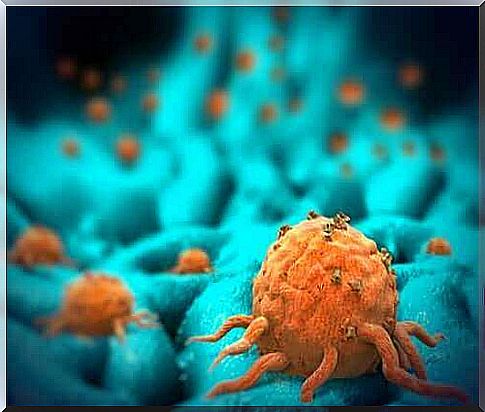The Difference Between Benign And Malignant Tumors
Malignant tumors are characterized by their ability to spread to other parts of the body through a process called metastasis.

The possibility of developing a malignant tumor is a worry that afflicts almost every one of us today. Cancer is currently one of the leading causes of death in the world. Therefore, it is normal to be afraid of developing it. However, you must be aware that not all tumors are cancer. A tumor is a collection of cells from any tissue in our body that have multiplied uncontrollably and formed an abnormal mass. Given the importance of the problem, in this article we will explain what the main differences are between malignant and benign tumors.
The main differences between malignant and benign tumors
Both malignant and benign tumors are pathologies that require extensive examination by a team of doctors. Likewise, both require treatment. This is done to avoid possible complications or major problems.
What mainly differentiates malignant tumors from benign tumors is their extent. In both types, the cells multiply in an uncontrolled manner. However, in benign tumors, they do not spread to other parts of the body.
As a rule, benign tumors are not life threatening. However, if they get too big and press on nearby organs, they can affect them. In such cases, removal is necessary.
In malignant tumors, the cells can spread to other areas of the body. In fact, they also tend to grow in these areas – a phenomenon known as metastasis. It can spread either by abutment, through blood, or through the lymphatic system.
This is how a malignant tumor usually spreads and causes other tumors in different parts of the body. Benign tumors, on the other hand, do not usually spread because their cells are surrounded by a membrane or capsule that encloses them.

Another way to differentiate between a malignant and a benign tumor is through differentiation. This relates to how much the tumor cells resemble those in the original healthy tissue:
- In malignant tumors, the cells look little or not at all like the original ones. This makes it possible to determine the stages of cancer.
- In benign tumors, on the other hand, the cells resemble those of healthy tissue.
It’s also important to know that a benign tumor usually grows more slowly than a malignant one. You can even stop growing. However, this does not happen with malignant tumors.
How is a cancer diagnosis made?
The earlier a tumor is diagnosed, the more likely it is that the treatment will be effective. Clarification is therefore necessary. The self-examination, in which one looks for lumps and other abnormalities, is one of the most important measures for early detection. However, you shouldn’t overdo it!
In addition, it is important to see a doctor regularly. After a certain age, it is advisable to undergo regular general examinations. Early detection methods are also used to enable tumors to be discovered in good time. For example:
- It is very important for women to have a mammogram every year to rule out a breast tumor.
- In men, examining the prostate through a digital rectal exam is essential.
- In addition to early detection, there are other techniques that make it possible to diagnose a tumor when it is more advanced. Imaging examinations such as computed tomography make it possible to identify the location and size of a tumor. Magnetic resonance imaging is also useful.
However, the only way to closely examine a tumor is through a biopsy. A fragment of the tumor is examined. With the help of microscopy it is possible to observe the behavior of its cells. In this way one can determine the degree of differentiation and the rate of proliferation.

Treatment of malignant and benign tumors
Treatment depends on the type of tumor, its location, its extent, etc. Most benign tumors can be removed by surgery. In addition, they usually do not need radiation or chemotherapy.
The treatment of malignant tumors, on the other hand, is usually more complex. Most combine surgery with cycles of radiation or chemotherapy, or even both. This is done to ensure the elimination of the malignant cells in every part of the body.
Conclusion
Early detection is crucial for every tumor. This enables more effective treatment to be initiated. This is important because even if benign tumors are not directly life-threatening, early detection prevents possible later complications.









